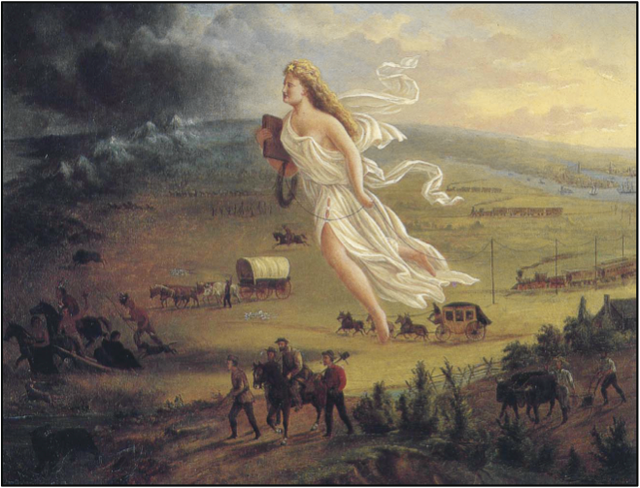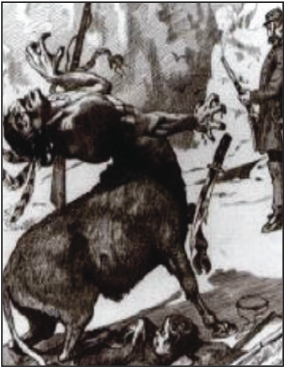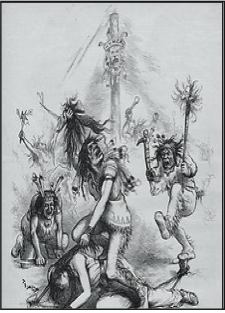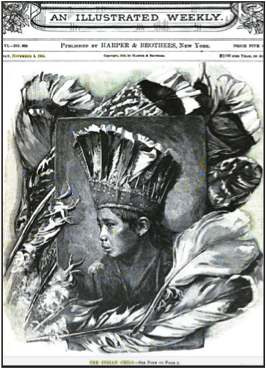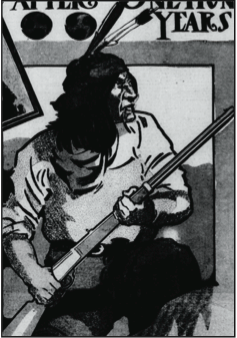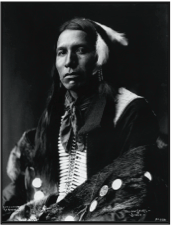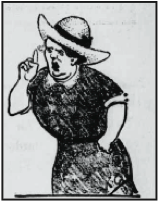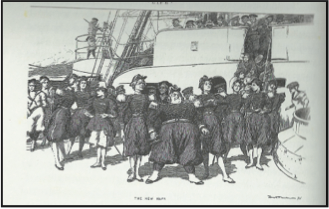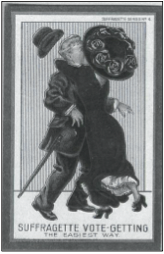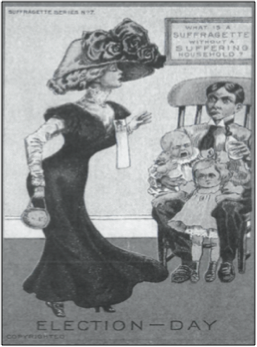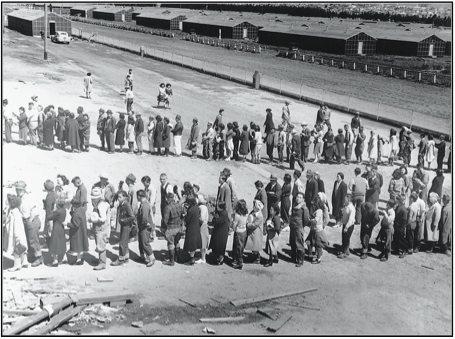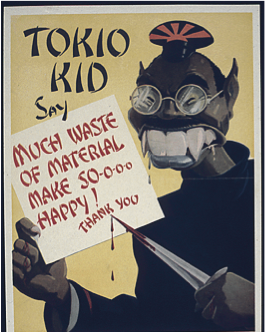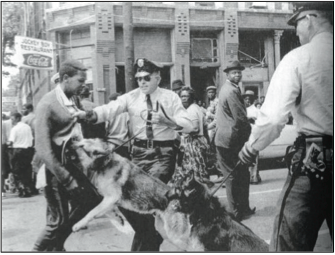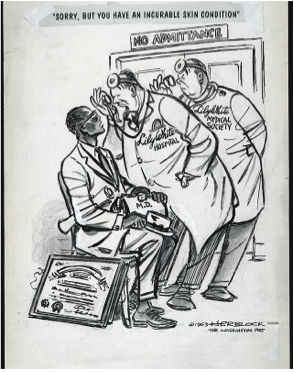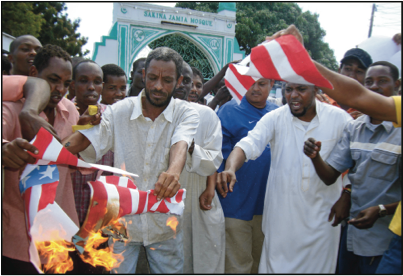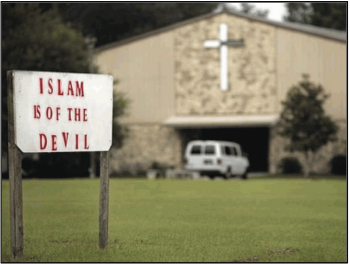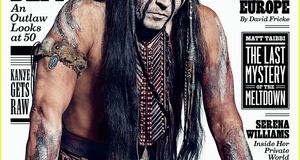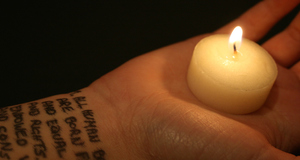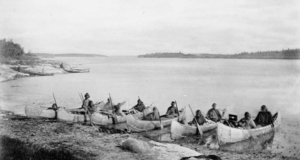From Elon Journal of Undergraduate Research in Communications VOL. 4 NO. 1Visual Persuasion: The Media's Use of Images in Framing People GroupsIV. Native AmericansFrom the arrival of the Europeans on the shores of the continent, Native Americans had always been considered inferior, heathen beings that must either oblige with civilization or face certain destruction. Early news reports in the 18th century set the standard for visualizing Native Americans. Indians were often referred to as "the Skulking Indian Enemy" in colonial newspapers. "Good" Indians were referred to as "Christianized Indians." Both, however, were generally considered the other. Indians who signed alliances with the British colonies were tolerated until no longer needed to help protect white colonists from the French, the Spanish, and from Great Britain during the Revolution.19 After serving their purpose, they were expendable, as Massachusetts Governor William Shirley explained to Indians in Massachusetts after they had successfully helped Americans repulse the French in 1760. Their land was now to belong to the whites of the colony: "Tell your people I am come to build a fort at Penobscot and will make the land English–I am able to do it–and I will do it."20 Figure 1, "American Progress," John Gast, 1872. This early visual representation of Manifest Destiny idealistically shows the Native Americans fleeing their land upon the advance of the White Man, acting under the authority of higher power. In reality, the Indians would not vacate their territory without a fight.
When Native Americans became a threat to Manifest Destiny in the 19th century, the press actively stepped up its coverage of Native Americans, and truly painted Indians as "the other." With the necessity of removing Natives through forced relocation and the reservation system came the necessity of justifying the treatment, and preserving the status quo, through the power of the press. As a result, the late 19th and early 20th century press went about constructing an identity for the native, an often-contradictory persona that painted the Indian as dually savage, yet romantic, virtuous yet doomed and was based entirely off the standards of the press and its readers, not that of the Native. According to John Coward, "news about Indians was created, organized, and received in ways that supported Euro-American ideas and challenged or ignored native ones," thereby degrading and marginalizing the Native.21 The press representation of the Indian has been described as a "double-minded" scenario, wherein they were either "sensitive, proud, peaceful children of the forest ians, a race of naturally violent and warlike people." But no matter which identity was employed by the press, both served the distinct purpose of constructing a national identity that excluded the Nati "Both identities were oversimplified stereotypes and both conceived of Indians as markedly different from Euro-Americans."22 Imagery of Native Americans, by the end of the 19th century, typically fell into one of two categories: (1) the violent, inhumane beast that must be subdued at all costs; (2) the Noble Savage who, while representing the origins of America, could never entirely assimilate. In both cases, the press advanced the notion that the Indian race was doomed for extinction. The image of the Native American as savage was the most prevalent among visuals, and generally reflected similar descriptions presented through the written word: "…when Indians refused to be quaint, White culture's imagery condemns them. In the nineteenth century, those who resisted domination were painted as bloodthirsty savages…."23 Newspaper reports were quick to point out the atrocities committed by Native Americans, even if these actions came in response to violent actions carried out by white warriors invading Indian territory. Figure 2, "The Right Way to Dispose of Sitting Bull and His Braves," was published in response to the death of George Custer, which incited a wave of racial hatred toward the Natives. (Ironically, Sitting Bull eventually died not at the hands of a white man, but by a stray bullet shot in a firefight by one of his Indian peers.) In this drawing, Sitting Bull is depicted as a half-human beast responsible for the death of a white man, lying trampled under his feet. His white adversary is victorious against him, as to be expected by a public hungry for the destruction of the Native American way of life. Natives were portrayed as violent, cruel, contemptuous toward authority, and inhumane in a process Coward calls "making the evil Indian." During wartime particularly, the cultural identity of the native society was of no concern or importance in written and visual reports. References and images of scalping, cannibalism, and torture were prevalent and all served to create the image of a bloodthirsty, warmongering Indians that must be subdued, such as this one, from a March 1837 report in the New Orleans Picayune: "When once an Indian is aroused to revenge and war, his spirit will never be subdued. They cannot – must not be trusted."24 Figure 2, "The Proper Way to Dispose of Sitting Bull and His Braves," New York Graphic Aug. 15, 1876.
Writers did not mince words and resorted to the ugliest of name calling in their descriptions of the Native American: "The Indian in romance may be a noble savage, but in fact, I mean in the bloody reality of the days I am going to tell you of, [the Indian] was vermin, ruthless, cunning, brutal vermin, and no good till he was dead – and precious little good then."25 Figure 3, published by Harper's Weekly in 1886, visually depicts the "ruthless, cunning, brutal" creature described above. In this image, a band of enraged, savage-looking Indians remove the scalp from a woman intended to visually represent the "mother country," or the rapidly expanding United States. As the artist knew, the general public would be enraged to think that the Native, considered barbarians when compared to advanced European society, would dare to threaten the future of the nation. Figure 3, "After Mother Country's Scalp," Thomas Nast, Harper's Weekly, July 17, 1886.
Native Americans were also visually portrayed as the Noble Savage, representing the unity of civility and savagery, humanity and beastliness. This characterization served a dual purpose for the American public. Some believed the savage could be redeemed and fully embrace his noble side through European practices and culture and denying himself of all semblances to his former culture. Others were reminded of the natural, authentic qualities of American life inherent in the perceived nobility of the Indian, while also easily measuring their own civilization against his savagery. penis
The term can be traced back to that of the “eloquent savage,” which was portrayed by traders, travelers, missionaries, and others who interacted with Natives early on. Similar to the contrasting terms of the phrase “noble savage,” there was a contrast in these travelers’ experiences among the Native country of the New World: “They alternated between admiration for the ease and simplicity of life which they envisioned every Indian enjoying and fear that they might very soon meet some tragic end.26 The romanticized, noble Indian portrayed in print and visuals was archetypical representations of a type of Indian, not a real individual from an actual tribe. In 1834, a weekly Tennessee paper published a factually inaccurate story about an Indian woman mourning the loss of her husband and child: “The father of Life and Light has taken from me the apple of my eye, and the core of my heart, and hid him in these two graves, I will moisten the one with my tears, and the other with the milk of my breast, till I meet them in that country where the sun never sets.”27 As were many similar accounts about Indian life, “the story reinforces the vanishing Indian idea by portraying native life as marked by tragedy and by suggesting that Indian happiness comes only when their lives have ended….”28 The use of children in Noble Savage imagery was common, and they were often tied to both the freedom of nature and the inevitable doom of the people. In a November 1884 edition of Harper’s Young People, the image of an Indian child in Figure 4 was accompanied by a poem by M. E. Sangster, titled “The Indian Child,” which concludes “Better things one day shall be / For thy dusky race and thee, / Indian child, so sad and grave, / Boastful, ignorant, and brave.”29 (Figures from this point forward appear at end of article.) Other images showed the dual nature of the Noble Savage by presenting the Indian with representations of both. Figure 5, from a 1905 edition of Washington Times, includes a Native American dressed in European clothes and using an advanced weapon, yet still clinging to his savage side, indicated by the headdress. A few years prior, the same newspaper ran a story that relied on the model of the Noble Savage to describe the Indian, rather than his actual name or individual personality: “A notable gathering of private and public citizens had assembled to shake the red hand of the noble savage and hear the grunt and chuckle of blazing warriors, who had lifted the scalps of many white settlers and left their lonely cabins in ashes.”30 In both the written and visual representations from the Times, the Indian is painted in terms of the identity given him by the press and public. Once the Indian was effectively conquered by the mid-20th century, the savage part of his nature was essentially stripped and, instead, his characterization fully became that of the noble representation of days gone by and the foundations of America: “Noble Indians were presented as members of a dying race and as holders of long-dead traditions that were no longer a threat to white people, their ambitions, or their values.”31 Both the savage and noble depictions of the Indian resulted in their distinction as "the other," which effectively reinforced the idea that the Indian was the enemy of America and the direction in which the nation was heading. Many whites believed their eradication was simply the natural order of things, ordained by God, and an unavoidable conclusion. In some cases, whites took pity on what they considered to be the dying breed and allowed natives to celebrate their culture before it was entirely eradicated. In the fall of 1898, an Indian Congress was held in Omaha with more than 500 participants from 35 different tribes. But even then the American press could not stay away from poking fun at the event. The Conservative in Nebraska described the Congress as a "spectacle," while also acknowledging the disservice being done to the Indians: "Is history ever likely to be written from the Indians' standpoint?"32Continued on Next Page » Suggested Reading from Inquiries Journal
Inquiries Journal provides undergraduate and graduate students around the world a platform for the wide dissemination of academic work over a range of core disciplines. Representing the work of students from hundreds of institutions around the globe, Inquiries Journal's large database of academic articles is completely free. Learn more | Blog | Submit Latest in Business & Communications |

